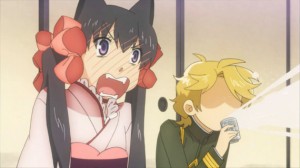(This is the first in a series of posts about the future of content creation and sharing online. Part 2 expands on the ideas in this post, while Part 3 considers monetization.)
I recently read Stop Publishing Web Pages, in which author Anil Dash calls for content creators to stop thinking in terms of static pages and instead publish customizable content streams.
Start publishing streams. Start moving your content management system towards a future where it outputs content to simple APIs, which are consumed by stream-based apps that are either HTML5 in the browser and/or native clients on mobile devices. Insert your advertising into those streams using the same formats and considerations that you use for your own content. Trust your readers to know how to scroll down and skim across a simple stream, since that’s what they’re already doing all day on the web. Give them the chance to customize those streams to include (or exclude!) just the content they want.
At first I had the impression that this would mean something like RSS, where content would be organized by publish date, but customizable, so a user could pick which categories/tags they wanted. This sounded like a great way to address how people currently approach content.
Upon further contemplation, though, I don’t think it would go far enough. Sorting by date and grouping by category seem like good options for stream organization, but why limit ourselves? What if I want to pull in content by rating, for example?
What if, alongside a few curated content streams, users visiting a content creator had access to all possible content tags–so that power users could not only simply customize existing streams, but create their own? As they start to choose tags, the other options would narrow dynamically based on the content that matches the tags and what tags are in place on that content. I’d want to be able to apply sub-tags when customizing a stream, so, for example, I could build a recipe stream that included all available beef entree recipes, but only sandwiches for the available chicken entree recipes. The goal would be to give users as much or as little power as they want, while maintaining ownership of the content.
Think of all the fun ways users could then curate and remix the content. Personal newspaper sites like paper.li have already given us a glimpse of the possibilities, but with properly tagged content, the customization could be even better, especially if the content curation system they’re using is flexible. Users could pick the images they want, create image galleries, pull in video, and put everything wherever they wanted it, at whatever size they wanted, using whatever fonts and colors they wanted. And what if each paragraph, or perhaps even sentence, in an article had a unique identifier? A user could select the text they want to be the highlight/summary for the piece, without having to copy and paste (and without the possibility of inadvertently misrepresenting the content).
And what if the owner of the content could tell what text was used to share the content? With properly tagged content within a share-tracking architecture, each sharing instance would serve as a contextualized trackback to the content owner. Over time, they’d have aggregate sharing data that would provide valuable audience information: who shared the content, what text they used, what pictures they used, what data they used, what video they used. Depending on how the sharing architecture is built, perhaps the content owner could even receive the comments and ratings that are put on the content at point-of-share, helping them determine where to look for feedback. They could see who shared the content directly and who reshared it from someone else’s share. Whose shares are getting the most reshares? How do those content sharers share the content? What is the context; what other content are they sharing in that space? This could inform how the content owner chooses to share the content on their own apps and pages.
For websites would still exist, of course. They would just be far more semantic and dynamic. Rather than being static page templates, they’d be context-providing splash pages, pulled together by content curators. Anything could be pulled into these pages and placed anywhere; curators could customize the look and feel and write “connector text” to add context (such as a custom image caption referring back to an article). This connector text would then become a separate tagged unit associated with the content it is connecting, available for use elsewhere. The pages themselves would serve as promotional pieces for content streams users could subscribe to; the act of visiting such a page could send the user the stream information. And content shared alongside other content would then be linked to that content. Whenever a content creator presented two pieces of their own content together, that would tag those pieces of content as being explicitly linked. Content would also be tagged as linked whenever sharers presented it together, regardless of creator. Perhaps explicit links would be interpreted by the sharing architecture as stronger than other links; perhaps link strength could be dynamically determined by number of presentations, whether the content had the same creator, and the trust rating of the sharers involved. Regardless, users could then browse through shares based on link strength if they chose.
Author and copyright information would be built into this sharing system. Ideally, authors would be logged into their own account on a content management system such that their author information (name, organization, website, etc.) would be automatically appended to any content they create or curate. There would probably need to be a way for users to edit the author, to allow for cases where someone posts something for someone else, but this would only be available at initial content creation, to avoid IP theft. This author information would then automatically become available for a “credits” section in whatever site, blog, app, or other managed content area that content is pulled into. Copyright would be protected in that author information is always appended and the content itself isn’t being changed as it’s shared, just contextualized differently. Every piece of content would link back to its original author.
I’m imagining all of this applying to everything–not just text-based articles and still images, but spreadsheets, interactive graphs, video. Users would have in-browser editing capabilities to grab video clips if they didn’t want to present the entire video. They’d have the ability to take a single row out of a table to make a graph. Heck, they’d have the ability to crop an image. But no matter how they chopped up and reassembled the content, it would always retain its original author and copyright information and link back to the whole original. Remixes and edits would append the information of the sharer who did the remix/edit.
Essentially, rather than pages or even streams, I’m seeing disparate pieces of content, linked to other content by tags and shares. All content would be infinitely customizable but still ultimately intact. This would serve the way people now consume content and leave possibilities open for many different means of content consumption in the future. Meanwhile, it would provide valuable data to content creators while maintaining their content ownership.
I would love to work on building such a system. Anybody else out there game?
Since writing I’ve found some related sites and thoughts:

























